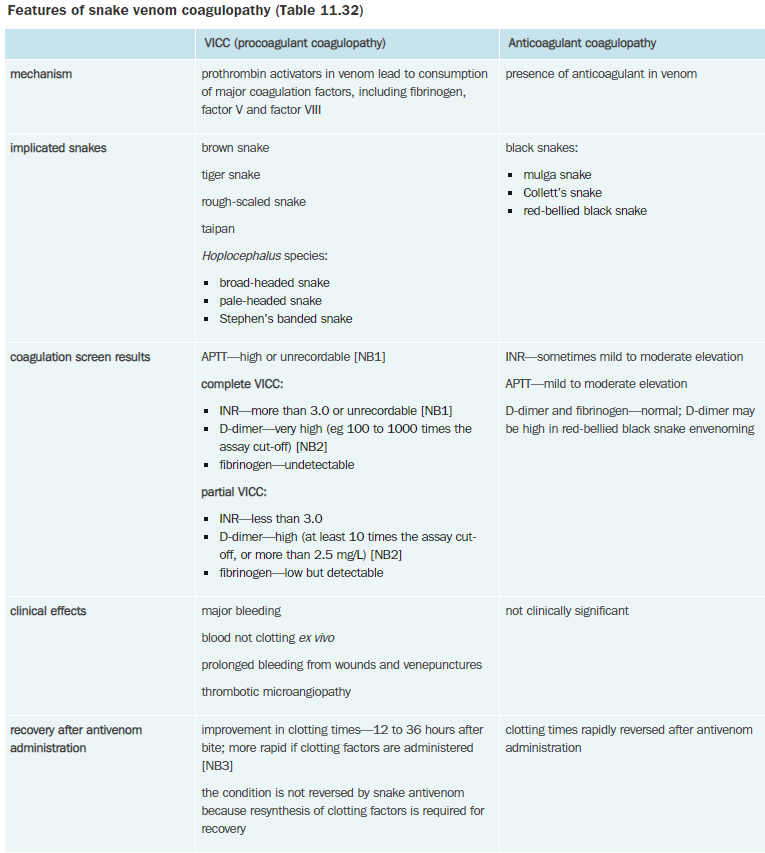A 30 year old male presents to ED after being bitten by a snake while walking his dog at Ellenbrook Nature Reserve. The patient has a PIB insitu and his first set of bloods were normal. Repeat coagulation studies post removal of PIB as below:
INR 1.8 (0.8-1.2)
APTT 50 sec (24-34)
D-dimer <0.5mg/l
Fribrinogen 3 g/dl (1.5-4g/dl)
- Describe and Interpret the bloods results
- What is the difference between VICC and anticoagulation coagulopathy in snake bites?
Answer
The above results show a mildly elevated INR and APTT, with a normal D-dimer and fibrinogen. These finding are suggestive of a anticoagulation coagulaopathy, but repeat testing at 6 and 12 hours need to occur to exclude VICC.
Brown, Mulga (black) and Tiger snakes are all possible causes for this snake bite and can be found in Perth Hills and Upper Swan areas. Black snakes cause anticoagulation coagulopathy and Tiger and Brown snakes cause VICC.
The following table shows the differences between VICC and anticoagulation coagulopathy:
References:
eTG – Toxinology- Snake bites

